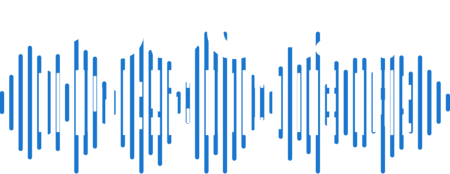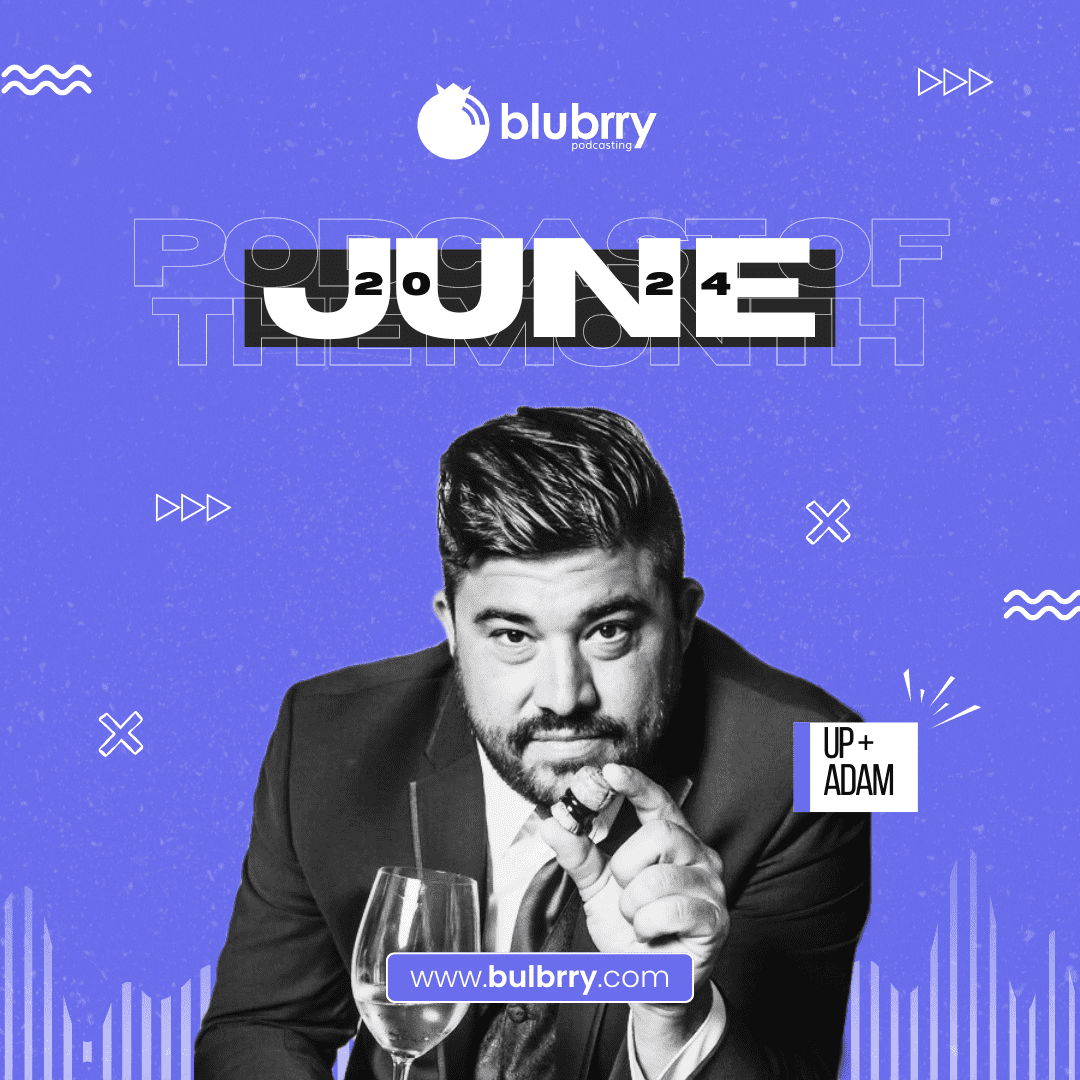
With a rich and storied career in broadcast media, voiceovers, and live event hosting, Adam Montiel has long been a vital member of California’s Central Coast community and San Luis Obispo County, or SLOCAL. Always eager to explore new and exciting ventures, he naturally gravitated toward the podcast universe – perhaps even foreseeing the significant decline of traditional radio. Now, having transitioned from terrestrial broadcast media, Montiel leverages his extensive on-air expertise in his podcasting adventures. Recently, he transformed his once-popular live morning show into the Up + Adam Show, a podcast published Monday through Friday.
Yet Montiel is far more than simply ‘talk.’ He actively serves his community, through local and national charities and is dedicated to event promotion and tourism growth in the area. And as he transitions from the profit-first radio industry to the engagement and intimacy of narrowcasting, you may soon be able to catch up with him at a podcasting event.
As our June Podcaster of the Month, Montiel shares outstanding professional insights, offering best practices to make your podcast more compelling, cleaner, and engaging by returning to the fundamentals.
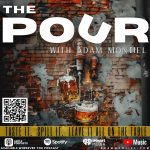 Between hosting and producing, you manage four podcasts. Each publishes on different time schedules. How do you plan your schedule for recording and production? Do you have any recommendations for other podcasters who manage multiple shows?
Between hosting and producing, you manage four podcasts. Each publishes on different time schedules. How do you plan your schedule for recording and production? Do you have any recommendations for other podcasters who manage multiple shows?
It’s tough sometimes. I prioritize my daily podcast, Up+Adam with Adam Montiel, cause it’s just that – it needs to be fed daily.
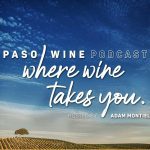 Where Wine Takes You: A Paso Wine Podcast is biweekly so the idea is to publish alternating weeks to my other content called The Pour. WWTY is specifically about the Paso Wine scene, and the people and stories that make it the most exciting wine by farm region right now and The Pour covers my winemaker and producer interviews from all over, also including beer, spirits, and cocktails in addition to wine.
Where Wine Takes You: A Paso Wine Podcast is biweekly so the idea is to publish alternating weeks to my other content called The Pour. WWTY is specifically about the Paso Wine scene, and the people and stories that make it the most exciting wine by farm region right now and The Pour covers my winemaker and producer interviews from all over, also including beer, spirits, and cocktails in addition to wine.
In addition to podcasting, you’ve been a radio personality, as well as doing voiceovers, event hosting and more. What are the benefits and challenges you’ve faced when comparing your roles in radio and podcasting?
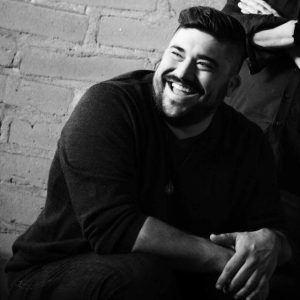
It has been really helpful to me. I think if more podcasters adopt some old-fashioned radio broadcasting fundamentals, it would help them greatly. For instance ‘Quarter-Hour Maintenance’ is a heavy theme in radio. Not just what you’re doing now, but what are you doing in 15 min? What can you tease and then pay off? This is how radio stations and shows keep listeners longer than the listener may have intended to stay. In radio, it’s called TSL (time spent listening).
Also, a simple fix any podcaster can do is a Radio 101 hack, and that’s to lose the collective references. Meaning, avoid saying things like, “What’s up everybody!” or “Hey you guys…”, etc. Radio (and podcasting for that matter) is an intimate medium, and despite the fact you are indeed broadcasting to many, your delivery should be to just one. You just talk to the other set of ears on the other end. For example, instead of, “Do you guys like mint chip ice cream as much as I do?” try, “I don’t know about you, but mint chip ice cream, I mean is there anything better?” Getting into the habit of just talking to one person and saying, ‘you‘ in those times, will make the listener feel closer to you.
Based in California, you are dedicated to making your community a better place for all. Can you tell us about some of the charities you’re involved with and why it is important to you?
I work closely with the Woods Humane Society, which is a leader in the country for how effectively they find homes for dogs and cats and how they even relieve pressure on other shelters, both locally and across the country. I work with them on and off the air throughout the year and just love them and what they do. I also work with the Cancer Support Community, Lumina Alliance (which raises awareness/resources for victims of sexual and intimate partner violence), and Big Brothers Big Sisters, among others.
I work with nonprofits because I believe in the power of community and the important role these organizations play in strengthening it. Each nonprofit I support represents a cause I’m passionate about and is worthy, whether it’s helping youth, promoting arts and culture, or assisting those in need.
Using any platform I am blessed with to amplify their voices and missions is the least I can do and it’s incredibly fulfilling to see the positive impact we can make together. Being involved with nonprofits isn’t just about giving back; it’s about connecting, learning, and being inspired by the dedication of those in these spaces.
Up + Adam launched as a podcast last fall and is the continuation of a traditional broadcast media show you hosted with American General Media. Was it challenging to make that transition from morning radio to a daily podcast?
When I was laid off from a terrestrial radio gig I had already dipped my toes in the podcast space and could see it was the future of radio. We are no longer broadcasting, we are narrowcasting, and it’s exciting. Listeners can check out a show about whatever they want, listen in the car, washing dishes, on a run, and pause whenever they want to as well.
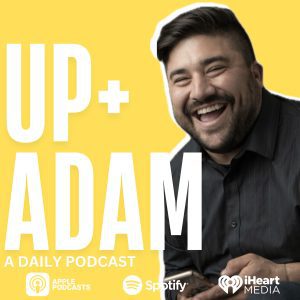
A lot of things at their time were said to be the death of radio: Napster, iPods, Spotify, you can think of others, but they did not kill radio. When radio cared less about curating an art form, and more about balancing cells on a spreadsheet, it slowly started to kill itself. That along with ad revenue migrating to digital, terrestrial radio is seeing its best days behind it, unfortunately.
Less than a week ago, I was a guest speaker to a media class at Cal Poly. No one in this class raised their hand when I asked, “Who here makes FM radio a pattern in any part of their day or their commute?” These are men and women in their early 20’s. Teens, late teens, barely even know what a radio is. It’s sad. I grew up loving broadcast radio, I still do, but I also am not going to stick my head in the sand and not evolve and get better with the times.
Up + Adam highlights news, fun events such as a local chihuahua costume contest for a popular Tamale Fest, and outstanding guests the likes of Beau Bridges and Elizabeth Hurley. How do you determine what and who to feature? Do you seek out your guests, do they find you or do you have a team that undertakes the scheduling for you?
I am currently producing and scheduling the show myself but as it grows, it’s challenging. I live and serve the central coast of California (SLOCAL they call it – for San Luis Obispo county) because we are a heavy spot for people who vacation here, there is a good mix of locals who appreciate the local coverage, but also many who like to keep their finger on the pulse here even when they don’t live here. Guests like Elizabeth Hurley and Beau Bridges are ones anyone can enjoy because of their widespread name recognition. I am always looking for people to interview, and I am lucky that organizations, musicians, producers, and artists, know the show has its following and they call to be a part of it as well.
Having been in the media industry for a fair amount of time, what equipment have you chosen to record and produce your personal podcasts? Do you have a team that helps with the process or are you flying solo?
I am flying solo but I will soon need help to edit. It’s tough because I am picky about editing, and find it hard to pass that off although I know I need to (badly). I use a Rodecaster Pro II in my home studio. I use a Rodecaster Pro 1 when I am on location. My home mic is Electro-Voice 320. On the road I use Audio Technica BPHS-1 – the headsets and quality make them great in public show situations.
I was seriously cracking up at the Homicide Hotline and Sidewalk Shoes intros to two of your episodes. Can you tell us more about the background and production of these sorts of clips?
Haha, thanks. Bits and parodies are fun, and they made me want to get into radio when I was a kid. They are still fun to this day, and those two were just examples of parody commercials I created and produced. Homicide Hotline was for a call-in line when you are so mad, you’re (facetiously) ready to kill someone. In the bit, an overworked mom with screaming kids calls in after her husband just let the dog out, and a college kid whose roommate drew a phallic rendering on his cheek the morning of a job interview. It’s light and airy, and just funny. Sidewalk Shoes have more of a local flavor, which people in the 805 [area code] can identify with. We have a hippie little beach city called Los Osos, and there are barely any sidewalks there. We made Sidewalk Shoes so those people could feel the joy we take advantage of by using sidewalks. But they are literal shoes with concrete slabs drilled to the bottom so it’s just absurd. They are fun to make (the parodies, not the sidewalk shoes), they are evergreen, and people enjoy them too.
Two of your podcasts, The Pour and Where Wine Takes You, are centered around wine. What do you find about wine and the vintners who create it that is so compelling?
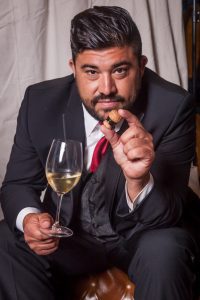
Winemaking and radio have surprisingly shown me so many parallels. One, you don’t get into either to get rich. Two, when they are done right, it’s about as close to magic as you can get. I love telling the stories of these winemakers and producers.
Now, it’s far more than wine, we have world-class craft brewing, spirits, even cider and more. The wine scene really paved the way, and it’s the majority of the chats, but I love it all here as well.
What are your short and long-term goals for yourself and each of your shows?
Just grow each brand. I also want to use my storytelling to help tourism, as well as get into other genres I see as interesting, like true crime, and more. I definitely want to grow these podcasts and get more advertising interest in them as well.
Can you share one tip or trick (or several) you employ when podcasting that you’d like other podcasters to know?
- Having a solid format for the show – benchmarks are important too.
- We all get into crutches. Always listen to your show so you can identify yours and fix them.
- Audio consistency. Find a good means to process, and hard limit your pieces.
- If you have questions, reach out to me, or YouTube these things.
- Editing: If you have a guest with tons of ums and ahs, it’s unlistenable. Your listener hates it and will tune out. It also does not make your guest look good, which you want your guest to come across as GREAT! It’s a pain, but it’s worth it.
- Interviews should be prepped, but also very ‘in-the-moment’.
- Don’t be afraid to follow up to ask questions they weren’t ready for, but only as you make them feel more comfortable.
- And like I mentioned earlier, 86 the ‘you guys’, and the ‘hey everyone’ kind of delivery. Your delivery should be like you are talking to one person. That’s the way listeners feel like they know you, and they are there with you.
Do you attend podcast conferences, shows, etc. and if so what is your favorite?
That is a goal of mine in 2024-25. I have attended radio ones, but not podcasting ones. I’m excited to learn about the don’t-miss ones and certainly hope to check them out and participate in the future.
Instagram: @adamontheair





